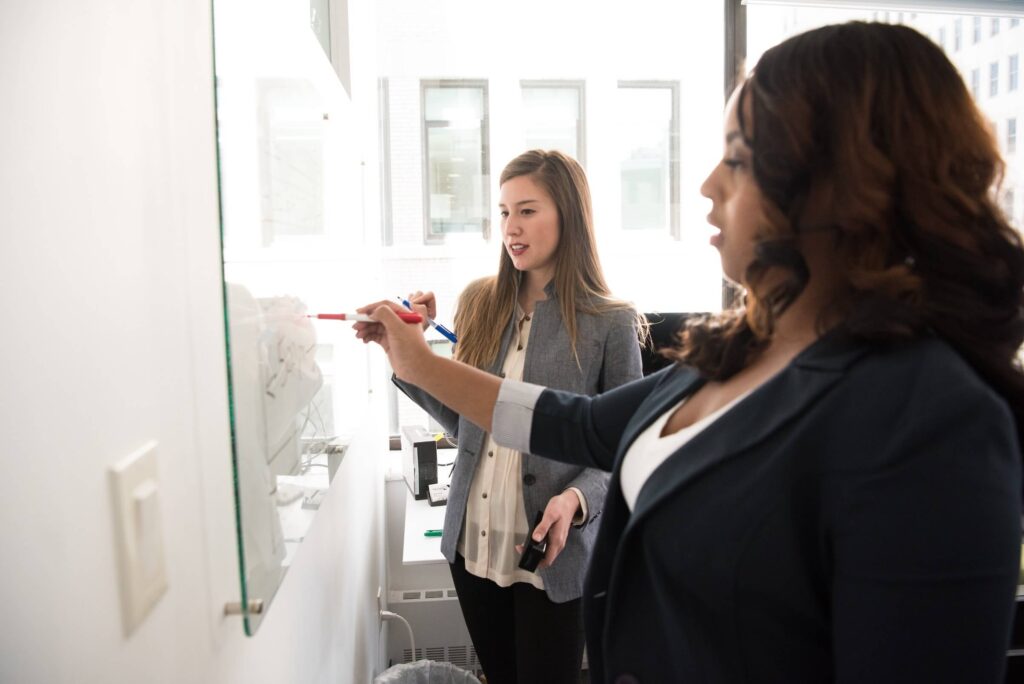Overview
Over the last few weeks, it has become clear that working from home has become a new reality for many of us. As we started talking to peers at various companies, we realized that everyone was working hard to adapt to this new work-from-home norm and remote-first learning and development. We decided to come together on a virtual Roundtable to compare notes.
Seventy-five leaders who work at the intersection of technical training and learning & development joined in, and Twitter was one of the three companies that presented.
Here is what Katie Hawkes (Senior Program Manager) and Dennen Hansen (Program Manager II) of Twitter University (Technical Learning & Development), had to say about effective peer-to-peer teaching and learning in a remote-first work environment.
1. Peer-to-peer learning program
Twitter University is a team of 3-4 people responsible for educating over 2,000 engineers. They focus on utilizing Subject Matter Experts to teach classes to each other efficiently and effectively at scale. Volunteers, not professional instructors, teach most of these classes.
2. Enabling Remote-First Peer Learning
Their onboarding program, Engineering Flight School, has historically been 21 hours of education during a new hire’s first week, entirely in-person. The challenge:
-
- Transitioning the global program fully online to remote-first learning
-
- Equipping volunteer instructors to teach effectively
3. Strategy: Crowdsourcing best practices
Twitter University started by crowdsourcing best practices from their volunteer instructors, particularly those who have historically been remote or have taught remote-only sessions. They began by doing the following:
-
- Create a Google Doc to compile brief, common-sense list of best practices for remote instruction
-
- Send an email to instructors asking for feedback
-
- Categorize then code feedback in a Confluence page to distribute to all instructors
-
- Evolve the list of best practices as the weeks go by
4. Remote-First Instruction Best Practices
The feedback they received fit neatly within four categories:
1: Class Setup
-
- Curriculum adjustment, reviewing the curriculum
Example: If group work functions typically well during a class but not online, you can choose to scrap that section or replace it.
- Curriculum adjustment, reviewing the curriculum
-
- Virtual environment
Test cameras/microphones for both yourself and others
- Virtual environment
2: Setting expectations
-
- Ask about special accommodations first, then set objectives, expectations for participation.
-
- Instructors and participants are encouraged to close out of all other windows.
3: Classroom Management
Participation
-
- Calling on people by name is a great way to personalize the class and build rapport.
-
- It also ensures that people are paying attention.
-
- If someone is answering most or all of the questions, make sure that you are calling on others. Check for understanding.
-
- Calling on people by name is a great way to personalize the class and build rapport.
Disruption/distractions
-
- Provide instructors with an understanding of how to utilize AV tools to minimize disruptions.
4: Accessibility
Disability/impairment
-
- Determine the necessary accommodations for both learners and instructors through each session.
Availability of content
-
- Sessions may not always be timezone-friendly to all customers and learners. Ensure that all courses and content are accessible to everyone in the organization who can benefit.
-
- Right now, the rule is to have everything recorded as a backup for anyone who couldn’t attend. The long-term plan is to make the overall program more remote-friendly.







